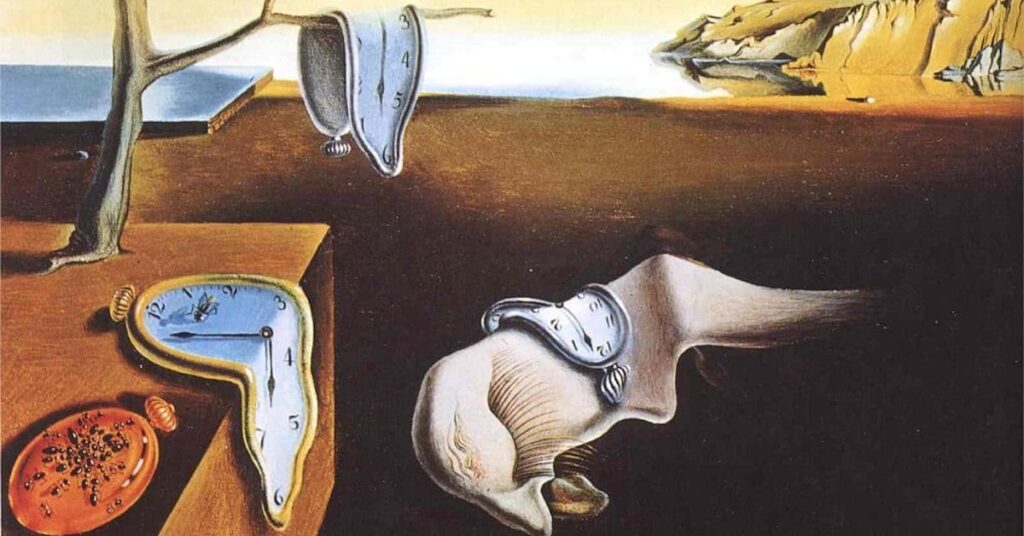1. GUERNICA

Artist: Pablo Picasso
Date: 1937
Where to see it: Museo Reina Sofía, Madrid, Spain
“Guernica” is a painting by Pablo Picasso depicting the bombing of the city of Guernica by German and Italian warplanes during the Spanish Civil War in 1937. It vividly portrays the horrors, terror, and madness of war through the Cubist style. Picasso used only black, white, and grey, intensifying the grim atmosphere and agony of war. By depicting disintegrated figures intertwined with each other, he maximized the chaos of war.
“Guernica” brought worldwide attention to the Spanish Civil War and is considered one of the most powerful anti-war paintings in history. This mural-sized artwork was moved to the Metropolitan Museum of Modern Art in New York for safekeeping during World War II and went back to Spain in 1981.
2. THE STARRY NIGHT

Artist: Vincent van Gogh
Date: 1889
Where to see it: Museum of Modern Art (https://www.moma.org/)
“The Starry Night” is Vincent van Gogh’s most widely recognized work and stands as one of the most acclaimed pieces in modern art history. Van Gogh, who struggled with mental illness, painted this masterpiece during his stay at the Saint-Paul asylum in Saint-Rémy-de-Provence, depicting the night view outside the window of his room.
Van Gogh aimed to depict his thoughts, emotions, and connection with nature through the vibrant colors of blues and yellows, along with swirling clouds, stars and the landscape. Although “The Starry Night” didn’t receive much attention during van Gogh’s lifetime, it gained global recognition after his death and has since been reinterpreted in various artistic fields such as pop art and music.
3. THE SCREAM

Artist: Edvard Munch
Date: 1893
Where to see it: National Gallery, and Munch Museum, Oslo
“The Scream” stands as one of the most defining pieces in Edvard Munch’s Expressionist paintings.
Based on Munch’s experience during a stroll with two friends in Ekeberg, it captures a figure in agonizing expression set against a crimson-tinged sky and a deep navy river flowing in vibrant curves, vividly depicting his emotions at that moment.
Munch described this experience, saying, “I was out walking with two friends—the sun was setting—suddenly the sky turned blood red—I paused, feeling exhausted, and leaned on the fence…there was blood and tongues of fire above the blue-black fjord and the city—my friends walked on, and I stood there trembling with angst…and I sensed an endless scream passing through nature.”
“The Scream” exists as a series of four artworks, with the final piece being auctioned at Sotheby’s for 120 million dollars.
4. OLYMPIA

Artist: Edouard Manet
Date: 1863
Where to see it: Musee d’Orsay, Paris
“Olympia” is an oil painting by the French artist Édouard Manet, depicting a nude woman lying on a bed attended by a black maid. It was inspired by Titian’s Venus of Urbino, but instead of portraying the idealized portrayals of goddesses, it depicts an upper-class prostitute who looks boldly at the viewer.
When it was first exhibited at a salon in Paris, it was attacked by the French public and conservative critics, described as “ugly” and “repulsive”. Criticized in its time as immoral and audacious, “Olympia” remains an iconic symbol of modern art, provoking discourse on societal norms, gender dynamics, and the evolving perception of beauty and sexuality in art.
5. THE PERSISTENCE OF MEMORY

Artist: Salvador Dali
Date: 1931
Where to see it: Museum of Modern Art, New York City
Salvador Dalí’s “The Persistence of Memory” stands as an iconic surrealist masterpiece, captivating audiences since its creation in 1931. This enigmatic painting portrays a dreamlike landscape where time appears fluid and subjective.
Dalí’s exploration of time’s subjective nature and the subconscious mind unfolds through these melting timepieces, suggesting the fleeting nature of existence and the relativity of time itself.
This artwork continues to fascinate and provoke contemplation, inviting viewers into Dalí’s introspective dreamscape, where the boundaries between reality and the imagination blur, offering a surreal glimpse into the complexities of existence and the fluidity of temporal reality.
